Do you know that Montana is one of the few places where you can observe grey wolves in their natural environment and where sustainable wolf hunting and trapping opportunities are regulated? Wolves, as Montana’s largest wild dog family member, are fascinating and multi-faceted creatures.
In this article, we’ll explore everything you need to know about Montana wolf hunting and trapping including understanding the wolves’ background, hunting regulations, and even the top outfitters in the state. This will guide both novice and experienced hunters and trappers.
More knowledge about Montana’s wolves will help you appreciate and respect this vital ecological balance. To ensure that you not only enjoy Montana’s outdoors but also contribute to its ecological conservation, clear knowledge of the state’s laws and rules regarding wolf hunting is essential.
- Related article: Prime Hunting in Montana
As you move forward, we trust that this insider’s guide to Montana’s wolf hunting will not only inform but also kindle your curiosity and appreciation for this significant facet of the state’s rich wildlife heritage.
7 Key Takeaways on Montana Wolf Hunting and Trapping
- The gray wolf is a species that is indigenous to Montana, and it holds significant value in the state’s wildlife legacy.
- You can identify wolves compared to a coyote by basing on physical appearances such as snout, ears, and height.
- There is a possibility of humans contracting Echinococcus, which is a type of tapeworm found in wolves from Montana.
- It is possible for an individual to hunt and trap a maximum of 20 wolves, but the limit for each method is 10 wolves.
- It’s illegal to hunt and trap wolves without a permit, with organizations working to manage wolf populations and minimize conflicts with livestock.
- There are procedures to follow after the harvest of wolves in Montana including mandatory harvest reporting and pelt tagging.
- Montana’s wolf harvesting policies, hunting season dates, rules, and reporting procedures are designed to ensure sustainable hunting practices and ecosystem management.
About Montana Wolves
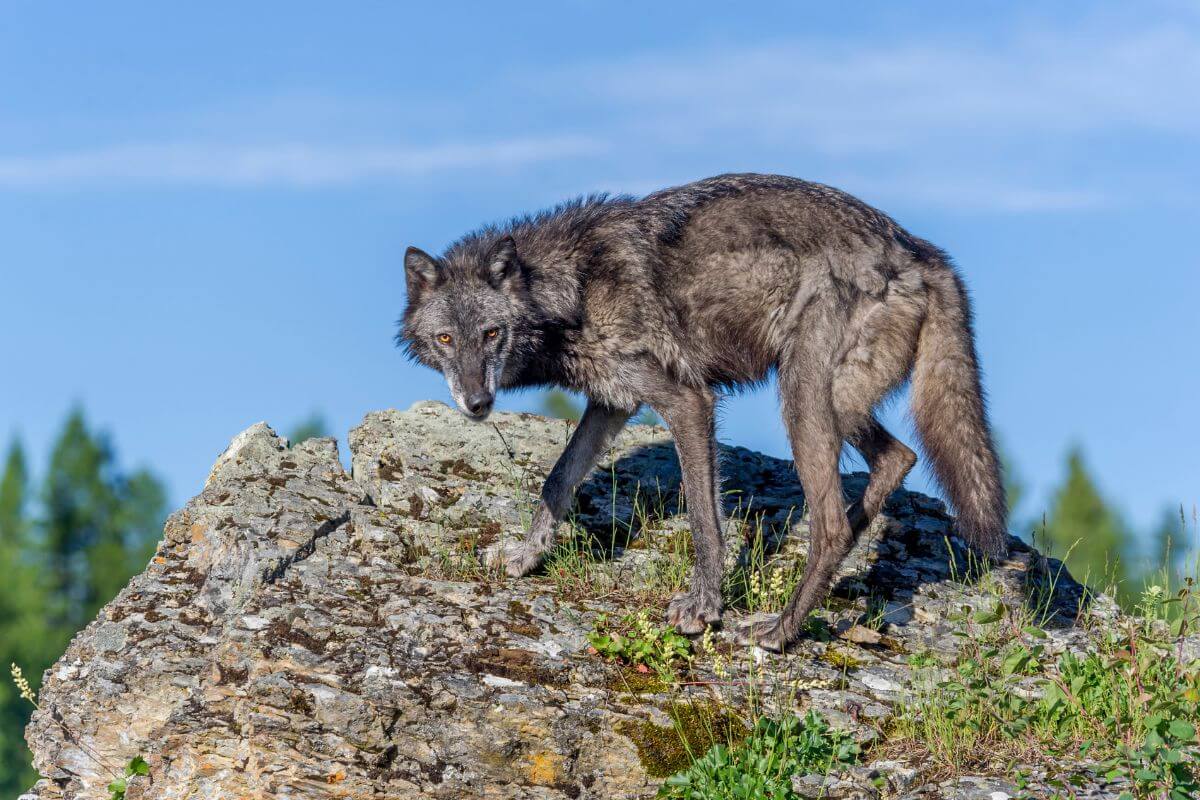
Montana is a haven for nature lovers and those who are captivated by the stunningly wild beauty it offers. A component of this untamed charm is the wolf, a fiercely intelligent and social animal, deeply engrained within the state’s rich wildlife tapestry.
While often surrounded by myths and misconceptions, several key aspects about Montana wolves are worth understanding. By shedding light on these creatures’ fascinating nature, we can better appreciate the role they play within the ecosystem and the continuous efforts aimed at their protection and conservation.
Montana Wolf Background
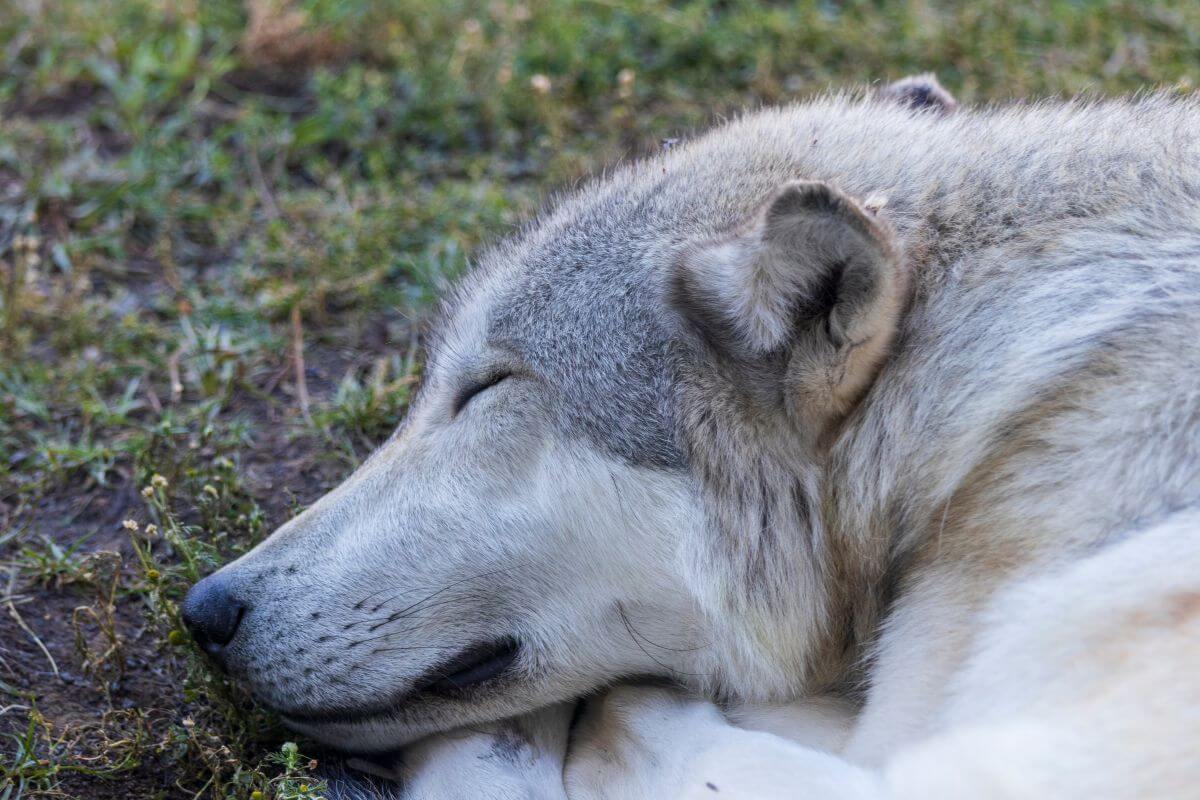
The gray wolf is a native species that holds great significance in Montana’s wildlife heritage. As a result, Montana Fish, Wildlife & Parks (FWP) is committed to managing wolves in compliance with federal law and the state conservation and management plan.
Montana maintains sustainable hunting and trapping harvest opportunities for wolves through regulated seasons. This approach ensures the balance between addressing population management needs and maintaining a healthy wolf population.
These majestic wolves, known as the largest wild members of the dog family Canidae, thrive in their highly social nature. They live in groups called packs, with the average pack in Montana consisting of 6 to 8 animals. Packs typically include a breeding pair, their offspring, and other non-breeding adults.
While wolf packs are primarily found in western Montana, it’s important to note that wolves can be encountered anywhere within the state. These packs live within territories, where they actively defend against other wolves.
Wolves are carnivores situated at the top of the ecological pyramid. They primarily hunt large, vulnerable ungulates such as deer, elk, and moose. Additionally, they also prey on smaller mammals like beavers, rodents, and hares.
Montana’s wolf population plays a vital role in the state’s wildlife heritage. With regulated hunting and trapping seasons, FWP ensures responsible management while preserving the ecological balance.
Montana Wolf Identification
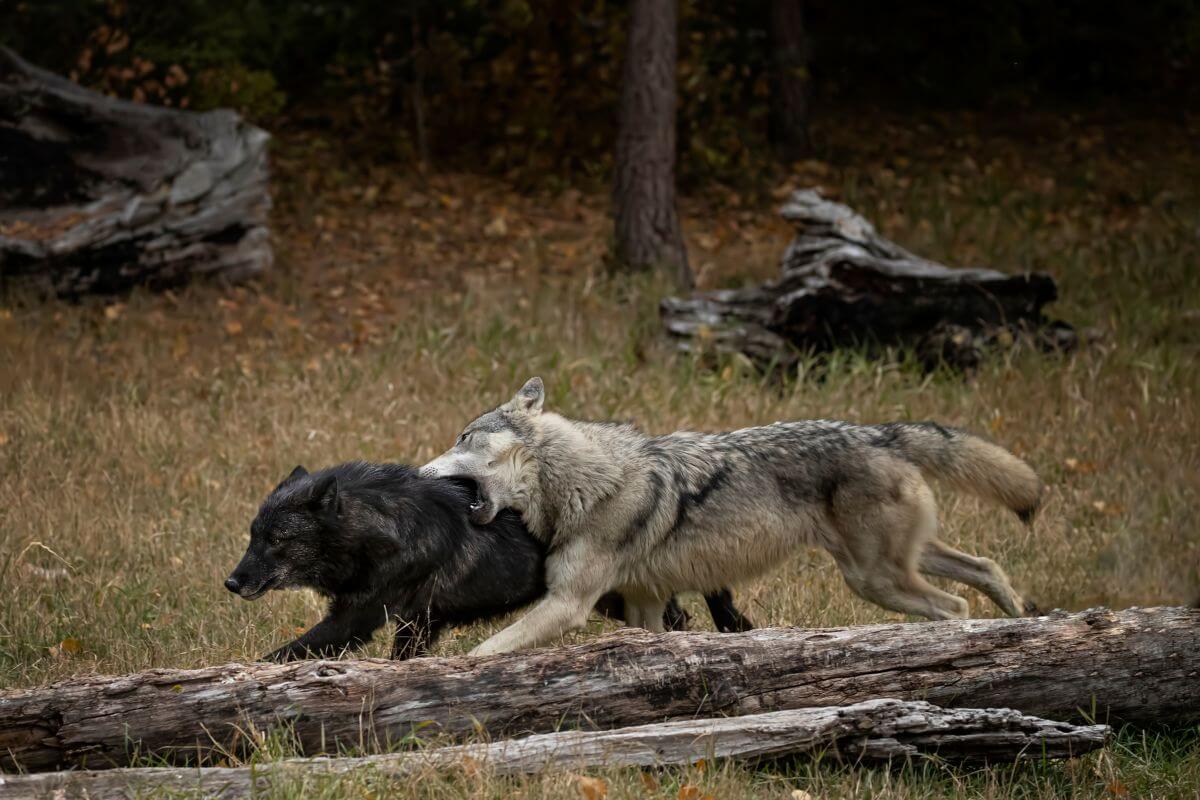
Montana Wolf Identification is a process that allows individuals to differentiate between the various wolf species found in the region. One key characteristic of Montana wolves is their diverse range of coloration. They can appear light gray, dark gray, black, or even white as they approach old age.
These wolves are roughly 2.5 feet tall and measure about 6 feet in length when fully grown. When it comes to weight, male Montana wolves typically weigh between 80 and 110 pounds, while females are slightly smaller, usually weighing in at 75-90 pounds.
However, their physical appearance goes beyond just their coloration and size. Gray wolves, specifically, are built for travel with their narrow bodies, long legs, and large feet.
When you’re out in the wild on a gray wolf hunting adventure, it’s important to be able to distinguish these majestic creatures from others, like the coyotes. The following chart showcases the key differences:
| Physical Characteristics | Wolves | Coyotes |
| Height | 2.5 feet tall | 1.5 feet tall |
| Body Length | 5-6 feet long | 4 feet long |
| Weight | 70-120 pounds | 30-40 pounds |
| Snout | Broad | Narrow |
| Ears | Round | Pointed |
| Color | Light gray to black | Light gray to brown |
| Track | 4.5 inches wide, 5-5.5 inches long | 2.5 inches wide, 2-2.5 inches long |
| Claws | Evident | Evident |
| Howl | Long, low howl | Shorter, high-pitched |
Before you head out on your Montana Wolf hunting trip, familiarize yourself with these key physical traits. Not only will it enhance your hunting experience, but it’ll also ensure you’re not inadvertently targeting the wrong species.
Echinococcus in Montana Wolves
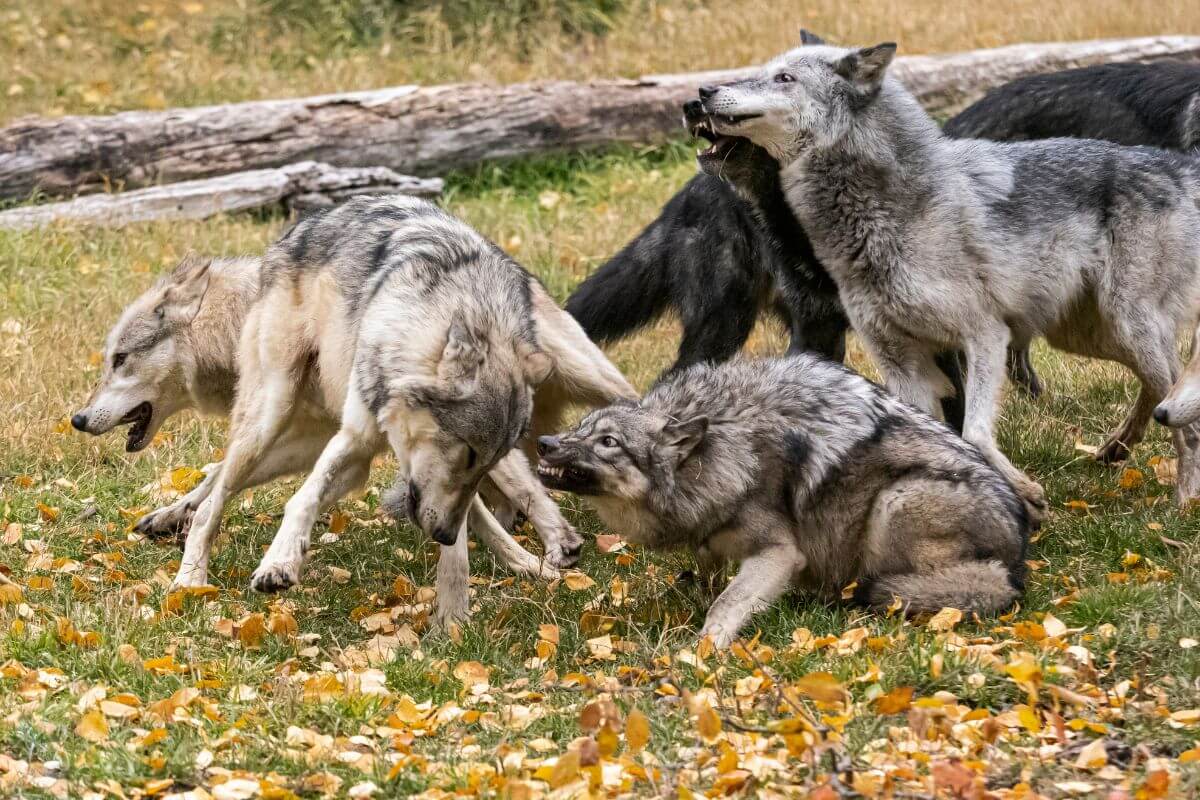
Echinococcus is a genus of tapeworm that can be found in various wildlife species in Montana, including wolves. There are 2 known species of Echinococcus in Montana wildlife, namely Echinococcus granulosus and Echinococcus multilocularis. Foxes, coyotes, and wolves are typical definitive hosts for this tapeworm.
It is important to note that there is some risk of humans becoming infected with Echinococcus. If humans become infected, the tapeworm can lead to the development of cysts in organs such as the lungs, liver, or brain, similar to what happens with other intermediate hosts.
To become infected with Echinococcus, a human must ingest parasite eggs that are passed with the feces of an infected canine. This can occur when consuming contaminated vegetation or drinking water that has been contaminated with infected feces.
Humans can also become infected by handling contaminated canine scat or fur and then transferring the eggs to the mouth by touching the face or before adequate hand washing.
To minimize the risk of Echinococcus infection, it is recommended to adhere to certain precautions:
- Firstly, it is advised not to touch or disturb the wolf, coyote, or fox scat.
- Wearing latex or rubber gloves when handling or field dressing/skinning wildlife can help prevent contamination.
- In cases of potentially contaminated vegetation, it is recommended to wash or cook it thoroughly. Boiling water can also help kill any potential parasite eggs.
By following these precautions, individuals can minimize the risk of Echinococcus infection when in contact with Montana wolves or other wildlife.
Montana Wolf Hunting Licenses and Fees
In Montana, individuals have the opportunity to hunt and trap wolves. However, there are specific regulations regarding the number of wolves that can be harvested, along with different types of licenses and associated fees.
When it comes to harvesting wolves, a person can take up to 20 wolves, but no more than 10 can be obtained through hunting, and no more than 10 through trapping, resulting in a maximum harvest of 20 wolves per person.
For hunting wolves, a separate license is required for each wolf. Montana offers different types of wolf hunting licenses, with varying fees for residents and non-residents:
| Wolf License Type | Details | Resident Fee | Nonresident Fee |
|---|---|---|---|
| Wolf License With a Sportsman or Combination License | 1st wolf license | $10 | $25 |
| Wolf License Without a Sportsman or Combination License | 2nd-10th wolf license | $12 | $50 |
Thankfully, navigating the system isn’t a tooth-and-nail affair; you can purchase wolf hunting licenses over the counter at almost all Fish, Wildlife & Parks offices, as well as License Providers. The modern touch, of course, is that you can also do it online via Montana’s Online Licensing System.
So, whether you’re a Montana native looking to stay within the legal lines or a nonresident waiting for that perfect wolf-hunting moment, the laws and licensing system here are about as straightforward as wolf hunting and trapping can ever be.
Montana Wolf Hunting Season Dates
The 2023 Montana wolf hunting season continues until the first quarter of 2024. This provides ample opportunities for hunters to engage in this challenging pursuit. Whether you prefer archery or general hunting, there are specific dates to keep in mind:
| Wolf Hunting Season | Season Dates |
|---|---|
| Archery | Sept. 2 – Sept. 14 |
| General | Sept. 15 – March 15, 2024 |
With these season dates, hunters have the opportunity to experience the thrill of Montana wolf hunting during both the archery and general hunting seasons. So, gather your gear, brush up on your skills, and embark on an unforgettable adventure amid the untamed wilderness of Montana’s wolf country.
Montana Wolf Hunting Regulations
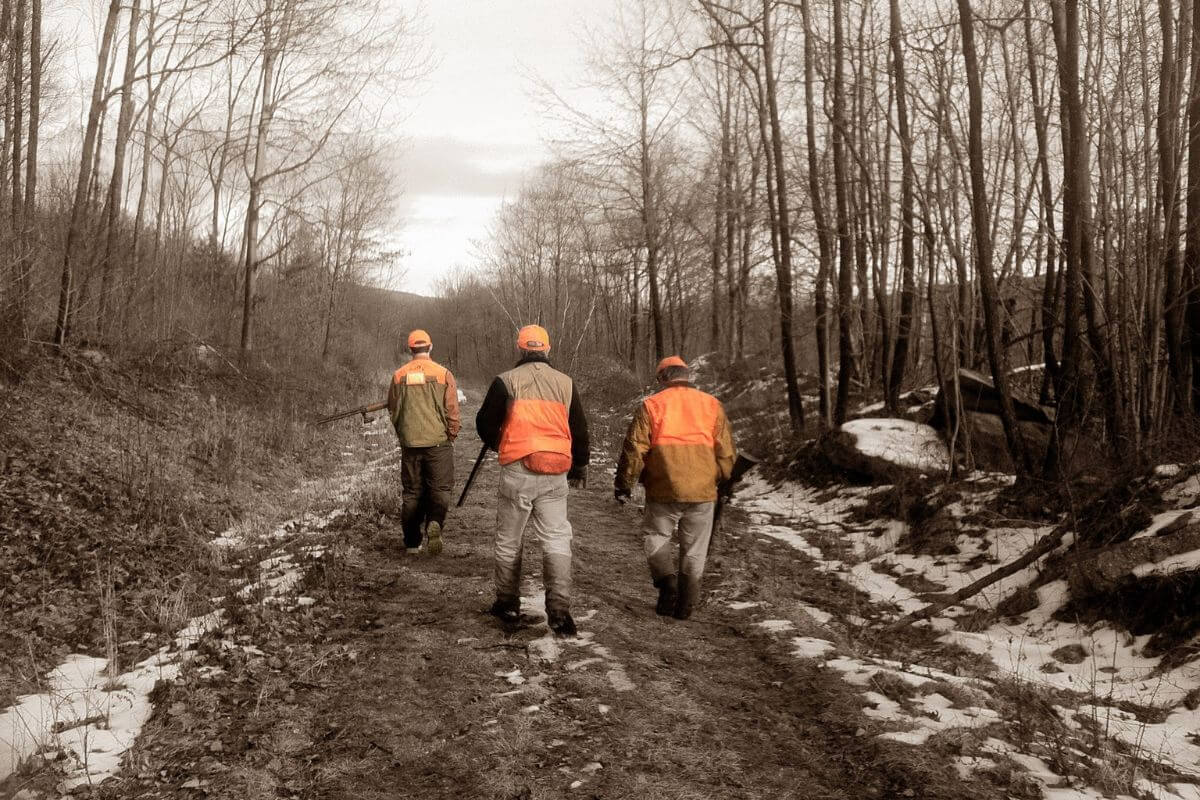
Understanding the regulations around wolf hunting in Montana is crucial if you’re considering this activity. Before you embark on your wolf hunting journey, make sure you’re up to speed with the state’s regulations, which play a vital role in preserving ecosystem balance and wildlife populations.
In the vast Montana wilderness, adhering to these regulations isn’t just about following the law — it’s about ethical hunting and wildlife stewardship. After all, the goal of wolf hunting isn’t just to take, it’s to help nurture the stability of the state’s diverse ecosystems.
Montana Wolf Hunting Laws and Rules
Montana has specific laws and rules in place regarding wolf hunting. Here’s what you need to know about wolf hunting laws in Montana:
- Archery Equipment – For wolf hunting, you can use a variety of hunting bows – longbow, flatbow, recurve bow, compound bow, or their combo.
- Baiting – Baiting is A-OK for wolves, but there are some restrictions within Lynx Protection Zones.
- Firearms – It’s a “free-for-all” when it comes to firearms for wolf hunting. Rifles, handguns, muzzleloaders, shotguns, archery gear, and crossbows are all fair game.
- Hunting Hours – You can begin hunting on public lands half an hour before sunrise and must be done half an hour after sunset.
- Indian Reservations – As per the Fish and Wildlife Commission (F&W) rule, Montana’s Indian Reservations are off-limits for wolf hunting unless there’s a tribal-state cooperative agreement.
- Private Lands Night Hunting – Night hunting on private lands is allowed, but no high-tech gadgets like infrared and thermal imaging.
- Quotas and Season Closures – When a quota is reached, the hunting and trapping season for the state, region, or Wildlife Management Units (WMUs) will close with a 24-hour notice.
- Unmanned Aerial Vehicles – The use of unmanned aerial vehicles (UAVs) to hunt wolves is strictly prohibited.
- Waste of Game – Wolves can’t be considered “suitable for food”. The choice is yours – carry the carcass or leave it in the field, but take the pelt.
- Reporting – To report a dead wolf or possible illegal activity, contact 1-800-TIP-MONT (1-800-847-6668) or a local game warden.
These laws and rules are designed to ensure the safety of both humans and wildlife. Remember, always hunt responsibly and within the bounds of the law.
Procedures to Follow After Harvest
After the harvest process of wolves in Montana is completed, a handful of procedures need to be followed:
- Mandatory Harvest Reporting – If you’ve successfully hunted or trapped a wolf, the 24-hour reporting rule is non-negotiable. You’ve got to report your kill, even if you plan to keep the hide and skull. Lying about it is a strict no-no.
- Pelt Tagging – Think of this as an official stamp on your wolf hide. Within 10 days of the harvest, you need to show the hide and skull to a designated FWP person for tagging. If you skip this step, consider your hide at risk of being taken away.
- Transfer of Possession – Once you’ve left the kill site, you can legally transfer the wolf’s carcass or parts to someone else, provided you attach your license or tag and complete a possession statement. As long as you’ve done everything by the book, you can pass on your prize.
Hunters and trappers need to adhere to these procedures after the harvest to ensure compliance with regulations and facilitate monitoring and management of the wolf population.
Montana Wolf Trapping
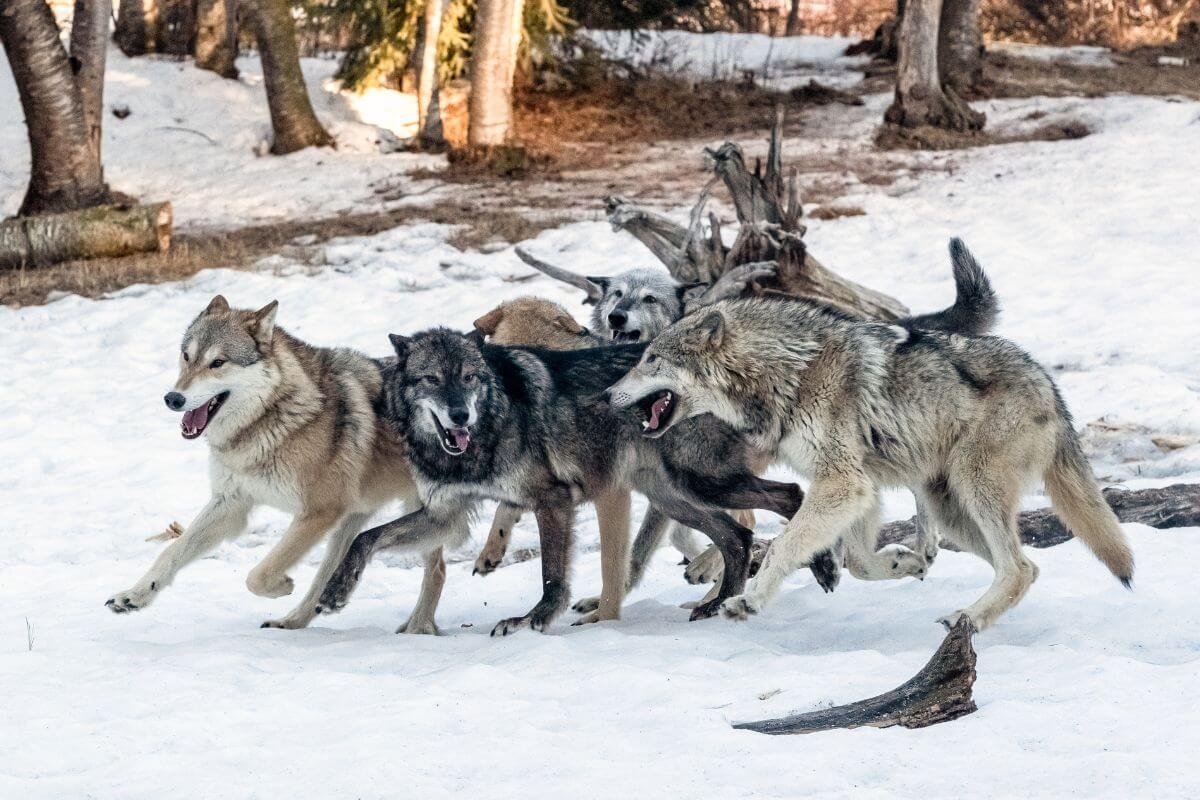
Wolf trapping in Montana is a practice deeply embedded in the state’s culture and history. It’s a method that demands patience, expertise, and intimate knowledge of the land. If you’re considering wolf trapping in Montana, it’s vital to respect the tradition, the wildlife, and the regulations that govern this pursuit.
1. Montana Wolf Trapping Licenses and Fees
Montana offers various types of wolf trapping licenses to residents and nonresidents. First-time wolf trappers must complete a trapper education and certification course provided by either the Montana Fish, Wildlife & Parks (FWP) or the Idaho government.
These courses are free and open to individuals aged 11 and older. It is important to note that trapper education is required for residents who have not purchased a trapper’s license in the previous three trapping seasons.
For trapping purposes, only a Trapping License is required in Montana. There are different types of wolf trapping licenses available:
- Resident General Trapping License – This license is available to resident Conservation License holders aged 12 and older. It allows license holders to trap and hunt wolves. Additionally, it permits trapping furbearers and hunting or chasing a bobcat.
- Landowner Trapping License Resident – This license is specifically for residents who own property or leased lands. It allows license holders to hunt and trap wolves and furbearers. Trapping and hunting activities are limited to the individual’s owned property and leased lands.
- Nonresident Trapping License – Only nonresident Conservation License holders aged 12 and older, whose state of residence offers nonresident trapper licenses to Montana trappers, can apply for this license.
- Special DNRC Recreational Use License – This license is required for trapping on state school trust lands. The application for this license must be submitted by September 30 annually.
The fees for these licenses vary depending on the type and residency status. A detailed chart displaying the costs can be found below:
| Trapping License | Fees |
|---|---|
| Resident General Trapping License | $20 |
| Landowner Trapping License Resident | $1 |
| Nonresident Trapping License | $250 |
| Special DNRC Recreational Use License | Free |
And there you have it – a solid understanding of how to get your wolf-trapping show on the road in Montana. Just remember, the thrill of the chase should always come with a big side of responsibility.
2. Montana Wolf Trapping Season Dates
The wolf trapping season in Montana runs from November 27 to March 15, 2024. However, some specific regulations apply to certain areas within the state.
According to a federal court injunction, in certain areas – mostly the western and central parts, including FWP administrative regions 1, 2, 3, 4, and 5, as well as Hill, Blaine, and Phillips counties – wolf trapping and snaring will be delayed until January 1 and will conclude by February 15.
On the other hand, in areas outside these regions and counties, the regular trapping season kicks off on November 27 and extends through March 15, following the 2023 wolf regulation.
It is also important to note that trapping or snaring in or near occupied grizzly bear habitats is prohibited. Here are the statuses in occupied grizzly habitats in Montana:
| Occupied Grizzly Habitats | Trapping Season Status |
| Region 1 | Closed |
| Region 2 | Closed |
| Region 3 | Closed |
| Region 4 | Closed |
| Region 5 | Closed |
To avoid any legal repercussions or conservation violations, I recommend cross-referencing your trapping location with the latest information from the Montana Fish, Wildlife & Parks (FWP). They should have the most up-to-date information specific to each region and applicable hunting districts.
3. Montana Wolf Trapping Regulations

In Montana, gray wolves are classified as a “Species in Need of Management,” and rightly so. The state goes to great lengths to maintain its population through sustainable hunting and trapping opportunities that adhere to its conservation and management plan.
Here are the regulations for wolf trapping in Montana:
- Checking and Placing Wolf Traps – Wolf traps should be routinely checked to prevent suffering and misuse. Trappers must remove their traps within 24 hours of catching their last legally harvested wolf. Additionally, uncollared wolves should be killed immediately, while trappers can release uninjured collared wolves if they haven’t reached their bag limit.
- Non-target Capture Requirement – If a trapper unintentionally catches a non-target animal including domestic pets, the incident must be reported to Fish, Wildlife & Parks (FWP) within 24 hours.
- Snares – While snares are allowed in most places and times, it’s a no-go in Lynx Protection Zones.
- Trapped Wolves – When a wolf is caught, trappers must immediately end the animal’s suffering via gunshot. Trappers are allowed to work during all hours, including at night.
- Traps – Foothold traps are the primary solution during the wolf trapping season, considered more humane than other options.
Despite these concerted efforts to manage the wolf population, there’s no need to worry about Montana’s wolves disappearing. The state’s wolf population has remained thoroughly stable, even with these more aggressive hunting and trapping measures.
Montana isn’t just about trapping, it’s about balance. By following these regulations, we continue to ensure that the wolf will forever be the stuff of dreams and not just postcards.
4. Montana Wolf Trapping Ethics
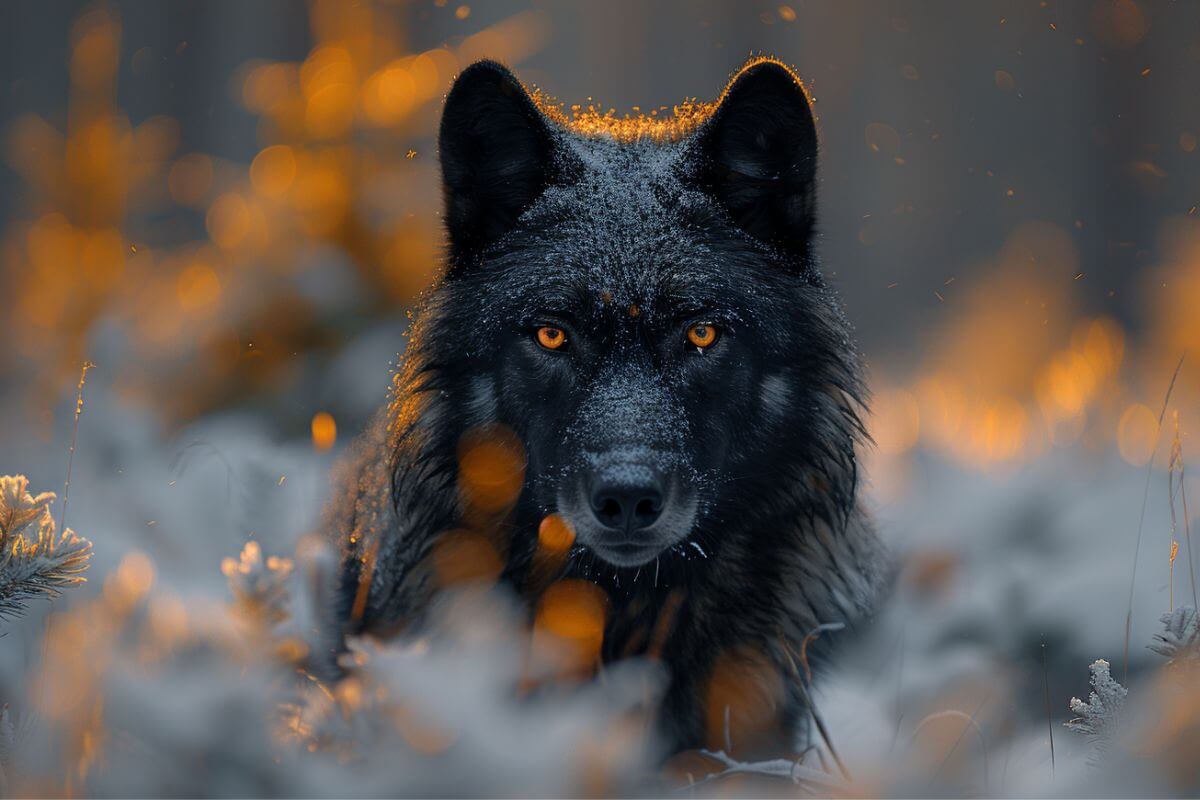
Trapping and the use of fur have long been controversial topics, with opposing viewpoints generating heated debates. Misinformation and misunderstanding further fuel the controversy, making it challenging for trappers to effectively communicate their perspectives to non-trappers.
However, demonstrating ethics and responsibility while engaging in trapping can send powerful messages that are universally understood and appreciated, regardless of one’s stance. In Montana, trapping ethics are particularly crucial when it comes to wolf trapping.
Trappers can effectively address concerns and misconceptions while showcasing their commitment to wildlife conservation by adhering to these Montana wolf trapping ethics:
- Maintain Good Landowner Relations – Trapping isn’t just about following the law; it’s about building relationships. Always ask for permission to trap on someone else’s land, and don’t just dump your gear on their property. Treat landowners with the same level of respect you’d want on your property.
- Respect Other Outdoor Enthusiasts – The great outdoors is for everyone. Knowledge is power, so find out what other outdoor activities like hunting, or hiking are happening in the area you’re trapping. Communicate with and make accommodations for the other folks using the same land.
- Keep Familiar With Improvements in Trapping Equipment and Techniques – Trapping is an art, constantly evolving for the better. Embrace it. While traditional and simple methods are often the most effective, don’t be blind to incremental innovations in the field.
- Appreciate Perceptions of Non-trappers – You’re not just an animal harvester; you’re a steward of the land. Understand that your words and actions are seen through the lens of different backgrounds and beliefs. So speak their language, not just the language of your traps.
By highlighting the ethics and responsible practices associated with trapping, trappers can bridge the gap of understanding between themselves and non-trappers. These universally appreciated values require no extra time or specialized training, making them accessible to all trappers.
In the case of Montana wolf trapping, these ethics are crucial to ensuring wildlife conservation and promoting a more balanced perspective on trapping as a legitimate use of a natural resource.
Montana Outfitters for Wolf Hunting
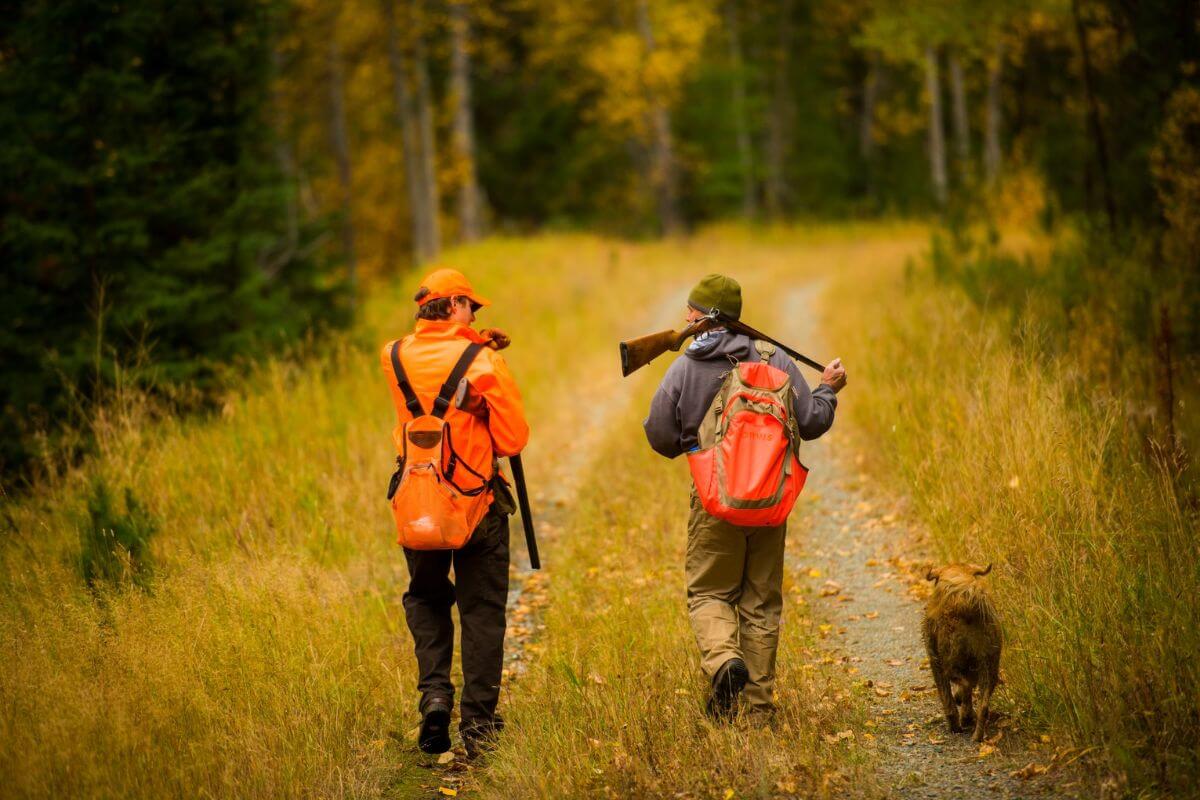
Montana is known for its thriving wolf population, making it a popular destination for wolf hunts. There are a few outfitters in Montana who have gained considerable experience in studying, tracking, and interacting with wolves, making them experts in hunting these elusive creatures.
Here are a few seasoned Montana outfitters you can trust to guide you in the journey of a lifetime:
- Linehan Outfitting – Linehan Outfitting has recently started offering wolf hunts alongside their big game operations. While their outfitting area in Northwest Montana may not be as heavily populated with wolves as other parts of the mountain West, there are still huntable numbers of wolves present.
- Cody Carr’s Hunting Adventures – Cody Carr’s Hunting Adventures offer both Wolf Calling Hunts and Wolf Trapping Adventures. They particularly enjoy hunting wolves later in the season when there is snow on the ground, as it allows them to pattern wolves and increase the chances of a successful hunt. Their wolf trapper tags have also consistently tagged out year after year.
- Elk Creek Outfitting – Elk Creek Outfitting is renowned for its diverse range of wolf colors, including brown, grey, silver, red, and black. Their hunting adventures take place on over one million acres of National forests, wilderness areas, and some private lands. They rely on calling and tracking techniques using snowmobiles, further enhancing their chances of locating and hunting wolves.
These outfitters are among the top ones in Montana for wolf hunting. They have studied, tracked, and interacted with wolves, developing successful methods to ensure an exciting and fruitful wolf-hunting experience.
Montana Wolf Hunting and Trapping Final Thoughts
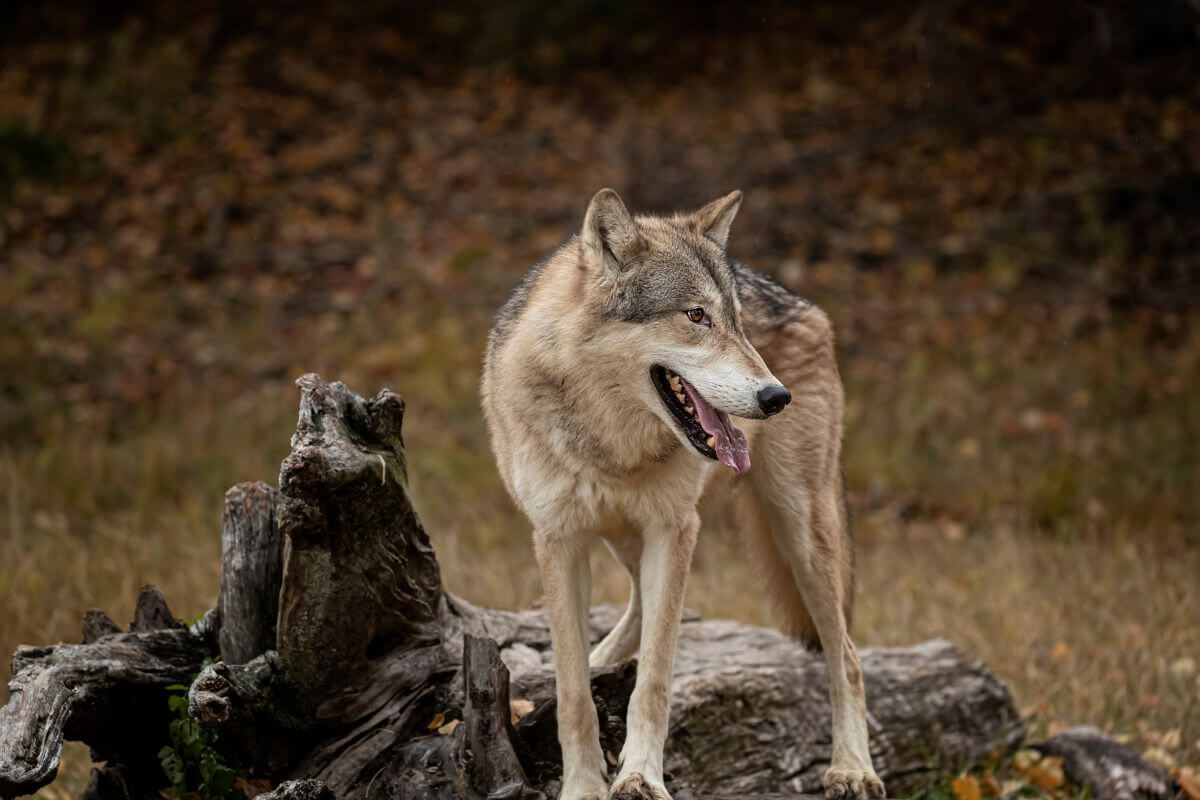
Montana’s wolf landscapes, from the protected valleys to the regulated hunting grounds, offer a dynamic blend that simultaneously conserves these majestic creatures and invites responsible exploration by enthusiasts.
The coexistence of traditional reverence, modern conservation efforts, and sustainable hunting practices has created a canvas where every nuance of wolf behavior and habitat can be deeply appreciated.
So whether you’re a local with a passion for Montana’s wild heritage or a visitor seeking tales of the untamed, the state’s comprehensive approach to wolf management ensures your journey will be both enriching and respectful.
As you venture into Montana’s wilderness, remembering your wolf encounters will be as essential as any map or gear you carry, ensuring this enduring tale of cohabitation flourishes for the generations to come.
Montana Wolf Hunting and Trapping FAQs
1. Can You Hunt Wolves in Montana?
Montana allows the hunting of wolves. Specific regulations, such as season dates and quotas, apply, and hunters must possess the appropriate licenses and adhere to guidelines set by the Montana Fish, Wildlife & Parks.
2. How Many Wolves Are Killed Each Year in Montana?
The number of wolves killed in Montana each year can vary based on hunting regulations, quotas, and other factors. Annual wolf harvest numbers are determined by the Montana Fish, Wildlife & Parks as part of their wildlife management strategies, and the figures can fluctuate.
In 2021, 160 wolves were harvested during the spring, and 139 wolves were harvested during the fall in Montana, resulting in a total of 299 wolves taken.
3. How Much Is an Out-of-State Wolf Tag in Montana?
Nonresident hunters in Montana holding a deer or elk combination license are required to pay $25 for their first wolf tag. For nonresidents without a deer or elk combination license, all other wolf tags are priced at $50 per wolf license.
4. Can Montana Ranchers Shoot Wolves?
In Montana, ranchers are allowed to shoot wolves on the spot if the animals are harassing or attacking livestock or pets. However, after such an incident, the rancher must report the wolf kill to state wildlife officials, ensuring transparency and compliance with regulations related to wolf management and conservation.
5. When Was the Last Wolf Killed in Montana?
Wolves were extensively hunted and nearly eradicated in the region during the country’s colonization. The last known pack of Yellowstone wolves was killed in 1926.
Wolves were later reintroduced to the park in the mid-1990s, contributing to their gradual recovery in the region alongside mountain lions and grizzly bears.
Explore our diverse range of articles about Montana:
- Hunt Upland Birds in Montana
- Hunt Swans in Montana
- Montana Hunting Season Dates
- What Are the Hunting Regulations in Montana?
- https://fwp.mt.gov/hunt/regulations/wolf
- https://fwp.mt.gov/conservation/wildlife-management/wolf
- https://fwp.mt.gov/hunt/trapping
- https://fwp.mt.gov/hunt/regulations/furbearer-trapping
- https://fwp.mt.gov/hunt/seasons
- https://fwp.mt.gov/binaries/content/assets/fwp/hunt/regulations/2023/2023-wolf-and-furbearer-final-for-web.pdf
- https://www.facebook.com/LinehanOutfittingCompany/photos/t.100035392672199/10155735321603602/?type=3

